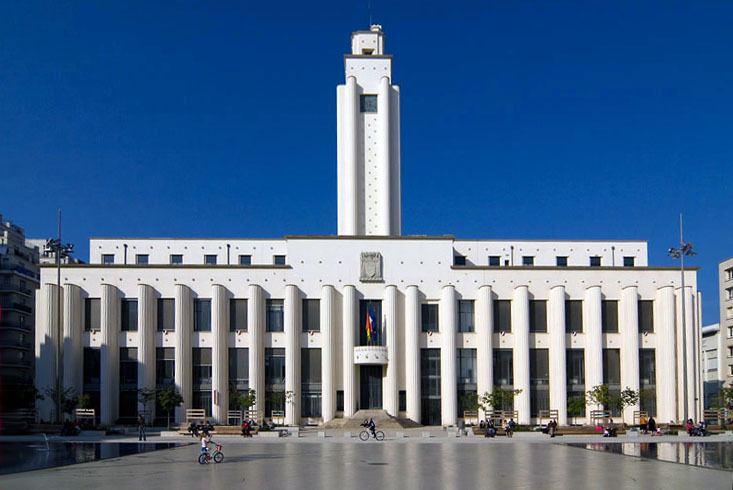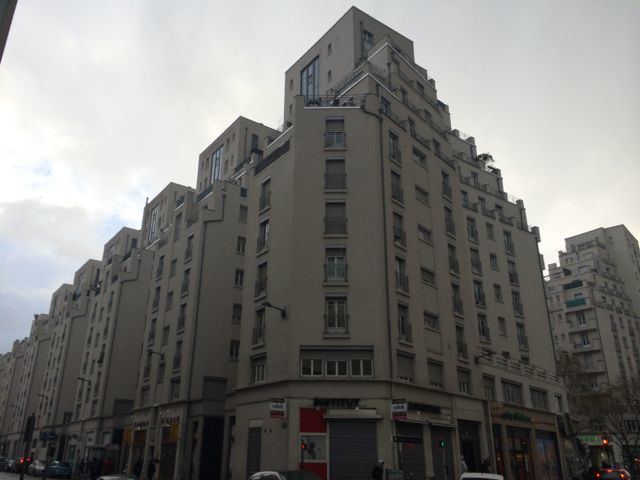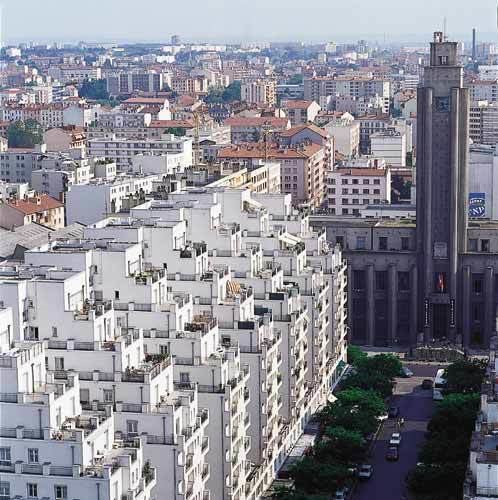Country Area 146,282 Mayor Jean-Paul Bret (PS) | Population 141,106 (2008) Region Rhone-Alpes | |
 | ||
Map of Villeurbanne
Villeurbanne ([vi.lœʁ.ban]) is a commune in the Metropolis of Lyon in Auvergne-Rhône-Alpes region in eastern France.
Contents
- Map of Villeurbanne
- Villeurbanne 19eme ville la plus peuplee de france
- History
- Primary and secondary schools
- Colleges and universities
- Weekend schools
- Transport
- Twin towns Sister cities
- Demography
- Notable people
- References

It is situated northeast of Lyon, with which it forms the heart of the second-largest metropolitan area in France after that of Paris. Villeurbanne is the second-largest city in the metropolitan area. In 2013, Villeurbanne was elected the city with the best administration of France, which attracts more and more people.

Villeurbanne 19eme ville la plus peuplee de france
History
The current location of downtown Villeurbanne is known to have been inhabited as far back as 6000 BC. Its current name comes from a Gallo-Roman farming area, established at about the same time as Lyon (then Lugdunum) and known as the Villa Urbana ("town house"). It would then become Urbanum, then Villa Urbane and, ultimately, Villeurbanne.
Villeurbanne has belonged to the kingdom of France since 1349. It was then separated from Lyon by the river La Rize, a former branch of the Rhône River.
Until the 19th century, the city was merely a patchwork of distinct villages separated by fields and undeveloped land. These villages have mostly survived, and nowadays form the neighborhoods of Charpennes, Cusset, Croix-Luizet, Maisons-Neuves, etc.
With the industrial era, Villeurbanne's economy soared: the textile industry was the first to bloom, followed by mechanical and chemical ones. The factories lured in numerous immigrants, most notably from Italy. Transforming from a rural community to an industrial town, Villeurbanne underwent a tremendous demographic boom in the late 1920s. From 3,000 inhabitants in 1928, its population rocketed to 82,000 in 1931. Mayor Lazare Goujon (elected 1924) engaged the city in a vast public works initiative. Arguably the most visible heritage of this program is the Gratte-Ciel, a housing complex made up of two Art Deco towers and annex smaller buildings, lining up along the Avenue Henri Barbusse. These structures are the work of architect Môrice Leroux, and one of the most notable Art Deco structures in France. Having undergone thorough renovation, the 19-story twin towers have become an emblem of the city.
Primary and secondary schools
Public senior high schools:
Private schools:
Colleges and universities
Many colleges and universities of the Lyon metropolitan area are located in Villeurbanne. Many of these are located on the La Doua campus, home to the Claude Bernard University (Lyon I), a public university, CPE Lyon and the Institut National des Sciences Appliquées de Lyon, one of the premier engineering institute (Grandes écoles) in France, very well known for high quality education and for research not only in France, but in the whole world.
Weekend schools
The Association Pour le Developpement de la Langue et de la Culture Japonaises (ADLCJ; リヨン補習授業校 Riyon Hoshū Jugyō Kō), a part-time Japanese supplementary school, is held in the Maison Berty Albrecht in Villeurbanne. It was formed in 1987.
Transport
Villeurbanne is well served by the Lyon area public transit system, the TCL (Transports en Commun Lyonnais). The east branch of subway line A runs through the city heart, and the new tramway lines T1 and T4 connects the La Doua campus to the Lyon business and commercial district of La Part-Dieu and the Presqu'île downtown.
Twin towns — Sister cities
Villeurbanne is twinned with:
Abanilla, Spain Mogilev, Belarus Abovyan, Armenia Khabarovsk, Russia Bat Yam, Israel El Eulma, Algeria Shushi, ArtsakhDemography
In terms of number of inhabitants, the city of Villeurbanne is the second city of the Metropolis of Lyon, the fourth city of the region Rhône-Alpes, the 27th city of France. It is also the biggest city of France not to be a prefecture.
Notable people
The list of notable native Villeurbannais includes:
